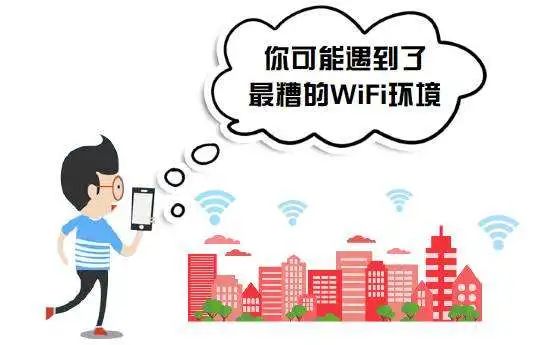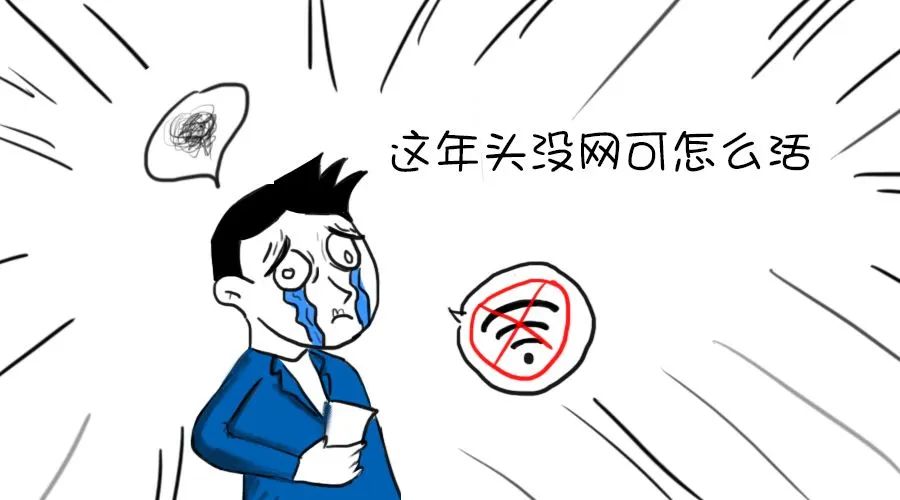Source: Science Popularization Hunan Online, PConline IT Encyclopedia
Generally speaking, the main reasons for Wi-Fi getting slower are as follows:
1. Incorrect placement of the router
To keep their rooms looking clean and tidy, many people choose to place the router in inconspicuous places, such as behind doors, in corners, or under computer desks. While this indeed does not affect aesthetics, the network signal can easily be blocked by doors, walls, desks, etc., which naturally slows down the internet speed.

Solution:
1. Do not place the router inside a cabinet, as the Wi-Fi signal can easily be interfered with by walls.
2. Do not place the router near electrical appliances like TVs, as the Wi-Fi signal can be affected by these devices. Keeping the router away from appliances will improve signal propagation.
3. Adjust the router’s antennas. If your router has two external antennas, it is recommended to keep one vertical and the other horizontal to maximize communication distance.
2. Wi-Fi password has been cracked
With the prevalence of various Wi-Fi password cracking apps, Wi-Fi passwords can easily be compromised without your knowledge, leading to slower internet speeds.
Solution:
1. Avoid installing Wi-Fi password cracking software on your phone or your family’s phones, as your Wi-Fi password may be leaked through the software.
2. Set a complex Wi-Fi password, regularly check the router management center for unauthorized users, and change the Wi-Fi password periodically to effectively reduce unauthorized access.
3. Set up a MAC whitelist on the router. By enabling this feature, you bind the MAC addresses of your router and devices like computers, smartphones, and tablets to allow one-to-one authorized access. This way, no other devices can connect to your Wi-Fi even if they know the password unless they are on the whitelist.
3. Network frequency selection
Many new routers on the market support dual-band, emitting two Wi-Fi signals: one at 5GHz and the other at 2.4GHz. Many users randomly choose or mistakenly believe that the 5GHz band provides faster internet speeds, which is incorrect.
How should you choose between the 2.4GHz and 5GHz Wi-Fi on a dual-band router?
Wi-Fi frequencies are generally divided into 2.4GHz and 5GHz. Older routers typically only support 2.4GHz, which is the most commonly used frequency, making it prone to interference from nearby devices, leading to transmission failures and slower speeds. Choosing the 5GHz frequency not only reduces interference but also provides a more stable connection.
However, not all wireless devices support 5GHz Wi-Fi; some older laptops and smartphones only support 2.4GHz by default. Additionally, while 5GHz Wi-Fi is more stable and faster, it has a shorter transmission distance compared to 2.4GHz. Therefore, for daily use, devices that are close to the router and support 5GHz Wi-Fi, such as smart TVs, should preferably connect to 5GHz. For regular smartphones or computers that often move around and might be farther away, it is advisable to connect to 2.4GHz Wi-Fi, and switch to 5GHz if they are near the router.
4. Issues with the router, broadband, or network cable
If the router frequently disconnects or cannot connect, and the above methods have been tried without success, there may be an issue with the router, broadband line, or network cable.

Solution:
1. First, turn off the router, wait about 5 minutes, and then restart it. If you know how to set up the router, you can also restore it to factory settings and set it up again. Sometimes, if the router has been running for too long, it may accumulate too much internal junk or overheat, leading to abnormal operation, which can be resolved by restarting or restoring factory settings.
2. If restoring factory settings does not resolve the issue, consider whether the router is faulty or if there are problems with the broadband line or network cable. If possible, try using a different router.
3. You can also try using a new network cable. If the issue still cannot be resolved, you will need to call the broadband provider’s customer service for repair and have a technician help you diagnose and fix the problem!
Initial review, first proofreading: Hu Huiting
Second review, second proofreading: Peng Changfeng
Final review, third proofreading: Chen Guangzhong
Technological innovation and science popularization are the two wings of achieving innovative development. Science popularization should be placed on an equal footing with technological innovation.Popularizing scientific knowledge, promoting scientific spirit, disseminating scientific ideas, advocating scientific methods, and improving the scientific literacy of the entire population.
▼
Long press or scan the QR code
